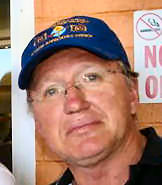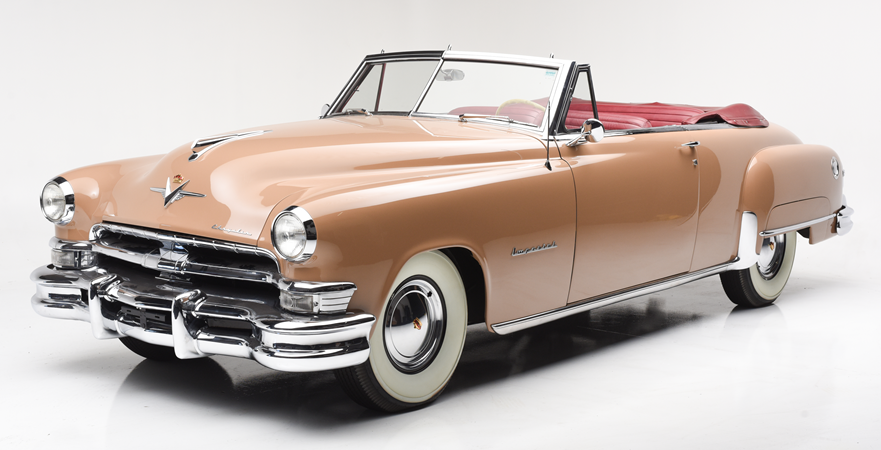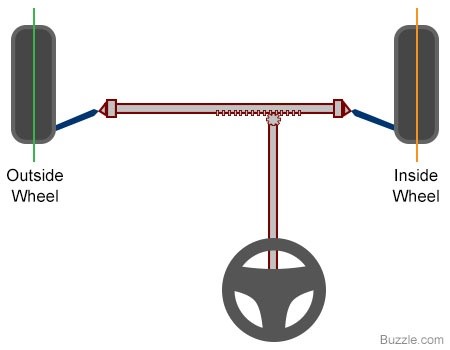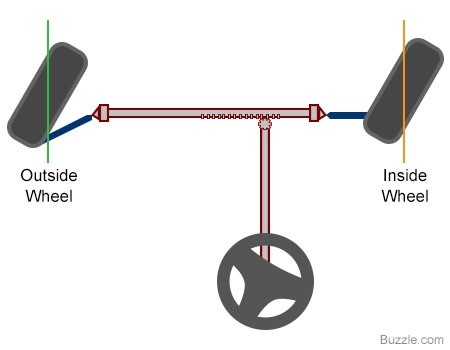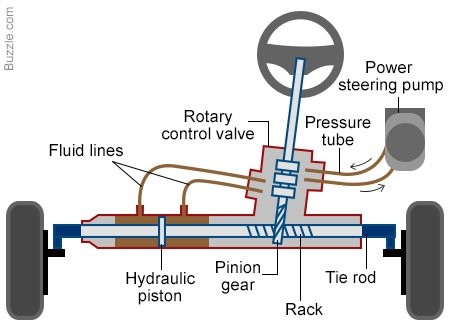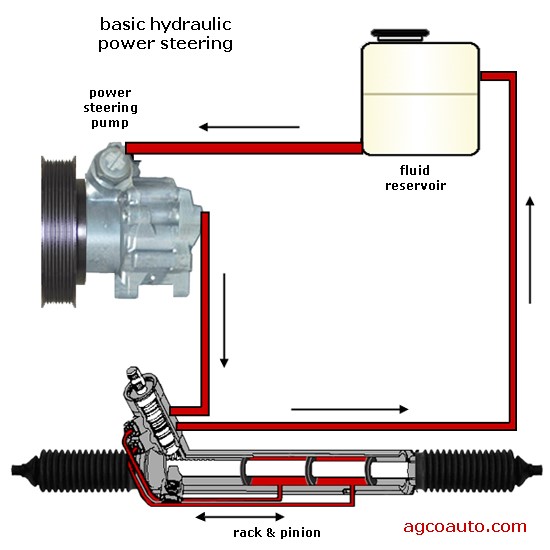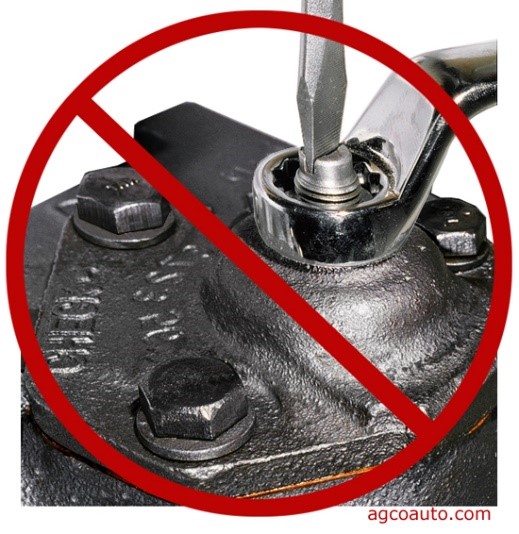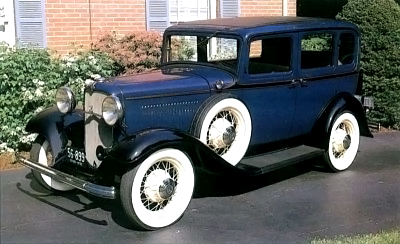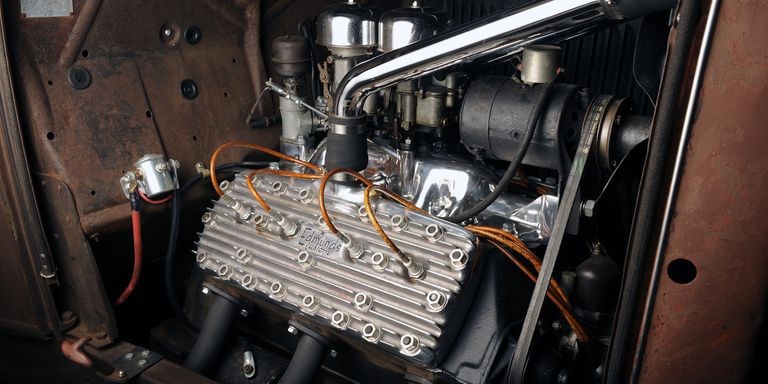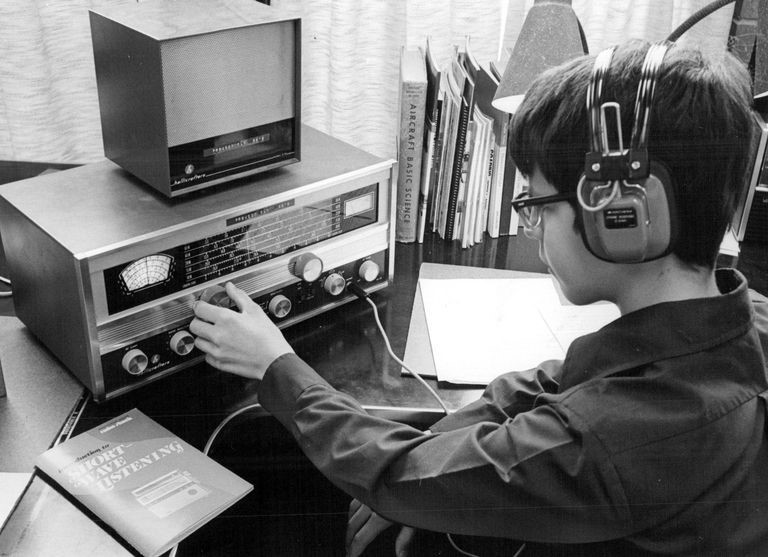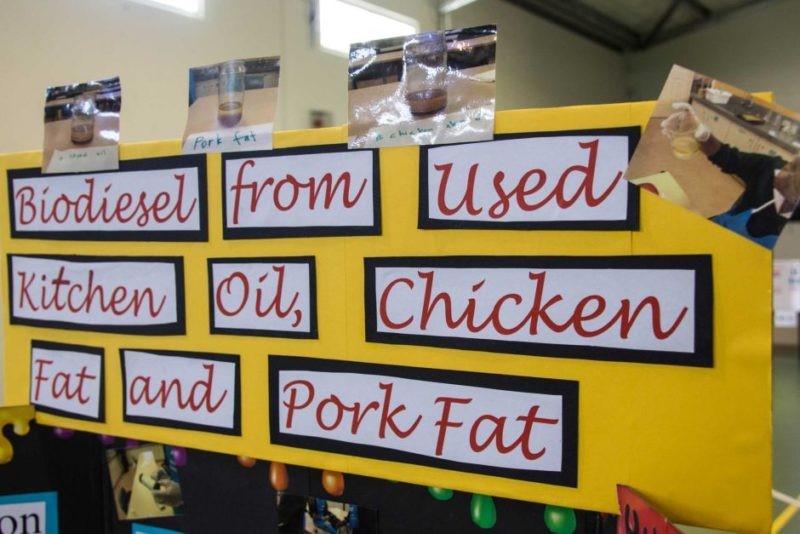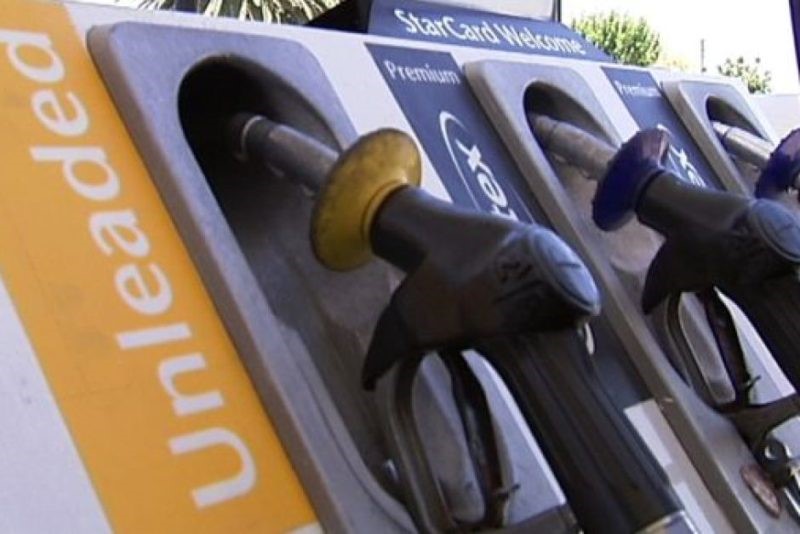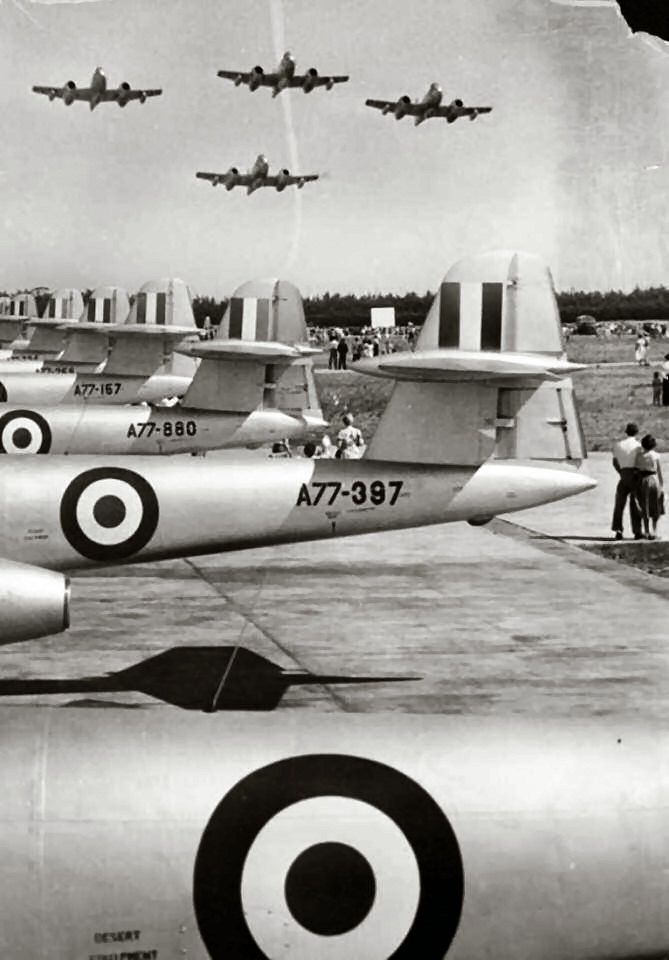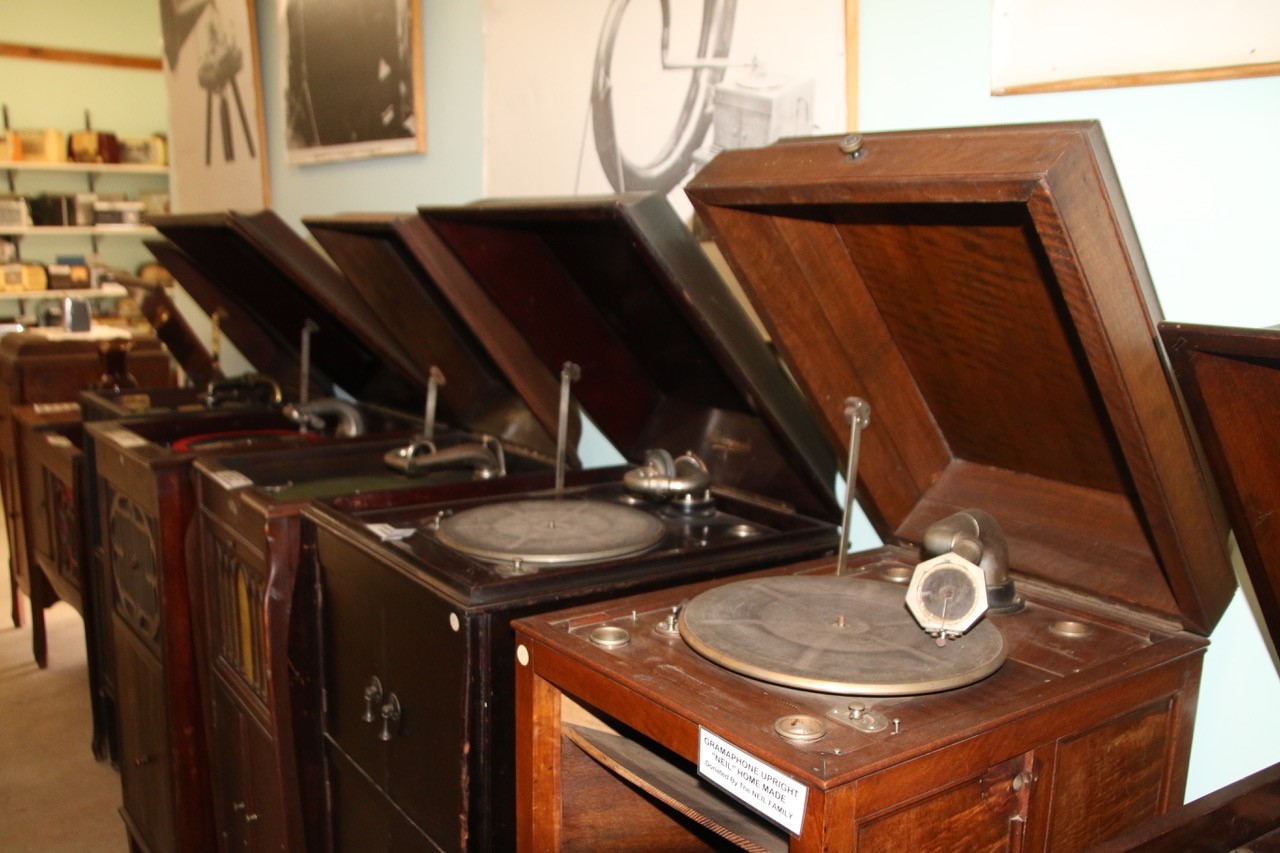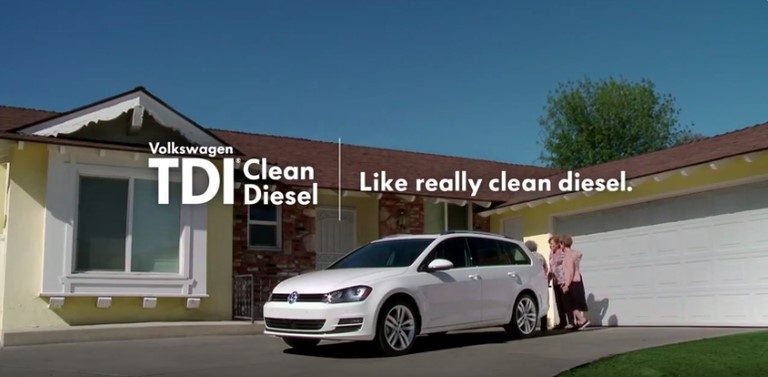|
|
||
|
||
|
Privacy Policy | Editorial Policy | Profit Policy | Join the Association | List of Members | Contact us | Index | Links |
||
|
Back Go to page: 1 2 3 4 5 6 7 8 9 10 11 12 13 14 15 16 17 18 19 20 Forward
|
||
|
Allan George’s Gems.
|
||
|
|
||
|
Power Steering – how does it work?
Once found only in luxury vehicles, these days, power steering is as common in cars as is having seats.
The first power steering system was invented way back in 1876 but it wasn’t until 1926 that a Francis Davis from the truck company, Pierce Arrow, demonstrated the first power steering system. Davis left Pearce-Arrow and after working with GM for a while, which refused to take up the steering system as it considered it too expensive, went to work for Bendix. When WW2 broke out, the US and British armies were looking for a system to make steering their heavy vehicles easier and adopted the Davis/Bendix system.
The Chrysler Corporation introduced the first commercially available passenger car power steering system on the fabulous 1951 Chrysler Imperial under the name "Hydraguide" The Chrysler system was based on some of Davis' expired patents. General Motors introduced the 1952 Cadillac with a power steering system using the work Davis had done for the company almost twenty years earlier.
Today it’s common – but how does it work?
The term power steering is derived from 'power assisted steering system'. Although electric steering systems have become common in most vehicles today, initially, the basic system for power steering was hydraulic, which worked thanks to the precise functioning of a number of small and large mechanical parts. But before we delve into how power steering works, we should take a look at how the steering in a vehicle functions.
Steering a vehicle involves getting its front wheels to turn synchronously, either to the left or to the right. This is achieved with the help of different gear systems. The two main types of steering gear systems are the rack and pinion and the recirculating ball type, the former is found in most cars today. The following is a description of the rack and pinion gear system.
Compared to other systems, rack and pinion provides a better feedback (road feel) to the driver, which makes it suitable for difficult terrains.
The rack and pinion mechanism comprises the following main components, which are located within the steering gear housing: rack, pinion gear, and tie rods.
The rack is a linear gear with straight cut teeth on it, while the pinion is the normal round gear which is set at an angle over it. Typically, the pinion has a helical cut on it, designed to provide a smoother meshing between it and the rack.
The car's steering wheel is attached to the pinion gear via a steering shaft. When you turn the steering wheel, the pinion spins and drags the rack along, moving it to the left or right, depending on the direction of the turn. The rack attaches to the steering arms of the wheels via tie rods. When the rack moves, it pushes one wheel while pulling on the other, making the car turn.
Thus, the rack and pinion arrangement is able to convert the rotational motion of the steering wheel into a linear motion, allowing the wheels to turn. This gear mechanism is also designed to provide a gear reduction, which makes it possible to turn the wheels with much less effort, considering the weight of the vehicle.
Typically, the gear ratio is so chosen that it requires you to make up to four complete revolutions of the steering wheel to make the wheels turn from lock to lock.
Working of Basic Power Steering System
A typical power steering system utilizes the same mechanism as the normal steering, with the addition of a hydraulic system that generates the 'power' needed to assist in the steering effort. The following describes how a basic power rack and pinion steering system works.
Power steering parts.
For providing hydraulic power assistance, a slight modification is made to the typical rack and pinion system described in the previous section.
As can be seen from the diagram at right, part of the rack is modified to form a hydraulic piston and cylinder arrangement. The cylinder is fed on two sides by openings to which fluid lines are attached. The piston is connected to the rack and moves between these two openings.
When the wheel is turned, as well as moving the rack, it opens a valve and allows pressurized fluid to be fed to one of the openings, the piston gets pressure applied to one side and assists the turning moment of the pinion. At the same time, the other opening on the other side of the piston returns low pressure fluid back to the reservoir. This is how power is provided, which significantly minimizes the effort needed to steer the vehicle.
The fluid, which is stored in a reservoir, is pressurized with the help of a rotary vane pump, driven by the car's engine through a belt and pulley arrangement. It pulls the low-pressure fluid from the rack back to the reservoir and pressurizes it before supplying it to the cylinder in the hydraulic steering system.
Thus, effectively, the fluid pressure does most of the steering work, while the driver controls the direction of the turn with the help of a very precise valve system.
Important Practical Design Aspects
There are a few important design aspects that are most essential for this system to be practically usable.
Pressure Release Valve
Since the rotary vane pump is driven by the car's engine, it continues to pump pressurized fluid into the system, irrespective of whether it is required or not. Also, since the amount of pressure generated is directly proportional to the engine speed, a large quantity of fluid is pumped at high speeds. To prevent a blowout from occurring, the pump comprises a pressure-release valve which opens up when the pressure gets too high.
Variable Steering Assist
Typically, more steering effort is needed to turn a car when it is at rest or moving at slow speeds, as compared to higher speeds. The power steering system should therefore assist the driver only when assistance is needed. For this purpose, one of the following methods are employed.
Torsion Bar System: This method employs a mechanical element, known as the torsion bar, to sense the amount of torque applied by the driver to the steering wheel. The torsion bar is present at the lower end of the steering column and is coupled to the pinion system. When the steering wheel rotates, so does the steering column along with the end of the torsion bar that is attached to it, however, since the torsion bar is relatively thin and flexible, its end attached to the pinion system resists being rotated. Thus, one end of the torsion bar rotates, while the other doesn't, effectively causing it to twist. The difference between the positions of the ends of the torsion bar is used to control an accurate rotary valve system, which directs the flow of pressurized fluid into the cylinder. The greater the twist, the greater will be the flow, and thus, the steering assistance that is provided.
Progressive Power Steering System (PPS):
The PPS comprises a sensor that detects the speed of the vehicle and accordingly adjusts the fluid pressure, Thus, when the vehicle is moving at slow speeds or is at rest, the fluid pressure is increased to lighten the steering, and when it is moving at higher speeds, the fluid pressure is decreased to lessen the amount of assistance generated.
Electric Pumping
Considering the practical aspects of the hydraulic system, it has been observed that driving the rotary vane pump by coupling it to the engine uses up a significant amount of the car's fuel, making the system inefficient. To improve on this, a hybrid system has been designed, which uses an electric motor instead to pressurize the fluid, while the rest of the hydraulic system functions as it is.
Thus, the basic power steering system in a vehicle utilizes hydraulic power to provide the assistance needed for turning the vehicle. Using this system, it is possible to smoothly and comfortably manoeuvre the vehicle, regardless of its size or weight. Today, this system has been upgraded a great deal, with the addition of numerous sensors that increase its accuracy and efficiency. A complete electric power assist steering system too has been developed, that comprises an on-board computer module to detect the magnitude and direction of the torque applied by the driver on the steering column, and accordingly use an electric motor to provide the needed steering assistance.
The most common problems with steering gears and rack and pinions are leaks and slack in the steering. The pump, pressure and return lines also leak and are replaceable. Leaking from the gear box or rack and pinion, most often is repaired by installing a rebuilt part.
Steering gears are often damaged by out of round and out of balance tyres
When a vehicle shakes or shimmies, the force is absorbed by the steering gear. Out of round tires or tires that were improperly mounted and balanced cause damaging shimmy. This force will damage bearings that support the gears and slack develops. Slack is free play in the steering wheel and is very annoying to the driver. It makes the vehicle far more difficult to control.
Many things other than the steering box can also cause slack in the steering. Properly checking tie rods and steering linkages helps prevent mis-diagnosis. Slack in the steering box is when the input shaft can be moved back and forth and the output gear does not immediately turn.
Many people have been mislead into thinking the adjusting nut on top of the steering gear is to remove slack. This adjustment is meant to set the initial lash, between the gears, when the box is built. This adjustment will NOT remove slack. Tightening this adjustment will force the gears together and cause them to bind. Ironically, binding gears make steering far more difficult and actually feel even more loose. (If you’ve ever owned an FJ you’ll know what we’re talking about). Steering valves can also be worn or damaged. Lack of power assist in one or both directions can result. Often the steering will start to turn normally and then become very difficult.
Steering death wobble
Steering death wobble can also be caused by a damaged steering gear. Death wobble is when the steering wheel turns violently back and forth, often after hitting a bump. Death wobble is more common on vehicles that have been modified, such as larger tires and offset wheels, but can occur on stock vehicles also.
Death wobble quickly destroys suspension components. It is not unusual to find tie rods and axle mountings badly worn, on vehicles with this problem. Many times worn parts are mistaken for the problem, rather than the symptom. All parts are replaced and the wobble continues. A worn or damaged power steering control valve, no longer able to center, floats from side to side and creates the wobble. The affect is like turning the steering wheel back and forth, at highway speed. The steering box is causing the problem, but is usually also a symptom of other issues. Proper repair involves correcting the root cause as well as replacing the worn components and the steering gear.
Cleaning and removing air when repairing hydraulic steering.
As with any hydraulic system, cleanliness is imperative. Routinely replacing power steering fluid may prevent many problems. When a steering component fails, it is necessary to remove any debris from the system. Filtering machines are often used by mechanics for this purpose. If no such machine is available, removing the return hose and continuously pouring fluid into the reservoir is better than nothing.
Hydraulic steering will not operate properly if air is caught in the system. Air most often enters when there is a leak, allowing the reservoir to empty. Air may also enter through weak seals on the input side or during part replacement. With air in the system, there is often a characteristic whine or moan when the steering wheel is turned. Some systems will self-bleed when the fluid is replenished. It may be very difficult to remove the air from other systems. The following procedure gives good results in most instances, without special equipment.
Power steering is like most things, prevention is the best policy. Regularly replacing power steering fluid and repairing leaks immediately will prevent most major problems. Selecting quality tires also has a big affect on steering components. Low quality tires are simply too expensive when the cost of damage they cause is considered.
|
||
 |
||
|
|
||
|
Why the Ford flathead V8 succeeded—and why it had to die.
A simple cylinder head helped bring V8s to the people. And made it obsolete after the war.
The Ford Flathead V8 wasn't the first V8, but when it debuted in the 1932 Model 18, it brought this brilliant engine configuration to the American masses. With a simple design featuring a flat cylinder head (hence the name) that placed intake and exhaust valves in the block, next to the cylinder, this V8 was incredibly cheap to mass produce. And it was this same cylinder head design that forced it out of production in 1953.
The 1932 DeLuxe V-8 Ford Model 18 sedan enjoyed a production run of 20,471 units. It sold for $645.
This engine was perfect for its day but ultimately, its big problem was airflow.
By placing the valves in the block next to the cylinder, air has to make two 90-degree turns in a complete cycle. Making things worse, intake and exhaust airflow are in opposite directions, further impeding efficiency.
The Flathead was also a very low compression engine, with the earliest 65-hp 3.6-liter variant having a compression ratio of just 5:1. Increasing compression could help boost power, but the flat cylinder head design meant doing so would restrict airflow further.
In the 1930s, the Flathead's low power and lack of efficiency weren't huge issues, but the rise of the overhead valve V8 (valves in head) after the war quickly magnified those problems. But, credit the Flathead for kickstarting America's love affair with the V8, leading Chevy to design the next great version, the legendary small block.
Click the pic below to see a video on why the engine was eventually scrapped.
|
||
|
|
||
|
A Boeing 777 was lumbering along at 800km/hour at 31,000 feet when a cocky F-18 flashed by at Mach 2. The F18 pilot decided to show off. On his state of the art radio that is part of his state of the art 3D and million dollar headset, the F18 youngster said to the 777 pilot, “Hey Captain, watch this.” He promptly went into a barrel roll, followed by a steep, unimaginable, vertical climb. He then finished with a sonic boom as the F18 screamed down at impossible G’s before levelling at almost sea level. The F-18 pilot asked the 777 pilot what he thought of that?
The 777 pilot said, “That was truly impressive, but watch this.” The 777 chugged along for about 5 minutes at the steady 800km/hour and then the 777 pilot came back on and said, “What did you think of that?” Puzzled, the cocky F-18 pilot asked, “What the heck did you do?” The 777 pilot chuckled and said, "I stood up, stretched my legs, walked to the back, used the toilet, then got a cup of coffee and a cinnamon roll and secured a date with the flight attendant for the next 3 nights in a five star hotel paid for by the company."
THE MORAL OF THE STORY IS:
When you are young and foolish, speed and flash may seem like a good thing. When you get older and smarter, comfort and dullness is not such a bad thing. It's called S.O.S. Slower, Older and Smarter.
|
||
|
All about those weird “numbers” stations used to talk to spies
Obscure radio stations reciting weird strings of words and numbers allow spy agencies to talk to their spies in broad daylight.
For more than a hundred years, innocent radio operators have occasionally stumbled upon a seemingly sinister secret: Radio stations set up by spy agencies. These stations, known as “numbers stations,” are meant to send coded messages to undercover agents. Since they broadcast in the clear, anyone can listen to them—but very few understand what the messages actually mean.
Numbers stations started in World War I and have likely been in continuous operation ever since, operating in more or less the same way. A particular station will broadcast at a particular frequency, typically on the shortwave band. It may play music, or static, and at a predetermined time a voice—recorded or synthesized—will butt in to recite a series of number groups.
These number groups are actually an encrypted message. Before an agent is dispatched abroad, both the agent and the number station have a matching set of “one time” pads—sheets of paper on which words are assigned random strings of numbers, usually only good once, on specific dates. Once in the field, the agent then listens to the numbers station, writes down a broadcast string of numbers, and turns to the one-time pad to decipher the message.
|
||
|
|
||
|
|
||
|
For example, you and I agree that for any message sent today—and today only—the number group 03591 means the word “chocolate,” 03492 means “fudge,” and 94341 means “sundae.” 03591 03492 94341 thus has an obvious meaning to both of us, but on this day only. To everyone else, those fifteen digits are totally unfathomable, written in an uncrackable code. The message can only be understood by a third party if they gain access to the one-time pads and figure out on which day to use them.
Number stations are weird and unsettling. They’re proof that someone, somewhere is doing something mysterious, that might actually be bad. They’re a call to action to someone who is not what he or she claims to be and may coincide with tensions between countries—or not. Does a numbers message mean someone is supposed to gather certain information, explode a bomb, or warn an agent of enemy action? Nobody knows, and that adds to the mystery.
You can read more about this HERE
FACs in Vietnam.
Pete Condon, who was on 52 Pilots Course, was a former Mirage and Phantom pilot and was interviewed regarding his time as a Forward Air Controller (FAC) in Vietnam. Peter, served in Vietnam from April 1969 to Dec 1969, after which he was posted to 1 Sqn to fly the Phantom. Then it was off to 75 Sqn in Butterworth which had the Mirage. After Butterworth he became the CO of Base Sqn at Darwin and when 75 Sqn returned to Australia in 1983 he was promoted as its CO.
After retiring from the RAAF, he settled on the south coast of NSW flying Lear jets out of Nowra and when it was time to hang up the bone-dome, he moved to warmer climes and now lives on Qld’s Gold Coast.
DVA has released an interview with Peter talking about his time in Vietnam flying the Cessna bird dog – click to pic below to see it.
|
||
|
|
||
|
E10 petrol may not be driving your car, or your dollar, further.
|
||
|
At least 40 per cent of all Australian vehicles will not derive any benefit from using E10. If you are one of the growing numbers of Australians looking to reduce your petrol bills by filling up with E10, you might be in for a surprise.
|
||
|
|
||
|
|
||
|
Unless the price difference between “regular” unleaded fuel (also known as 91 RON) and E10 is 4 cents per litre or greater, refuelling with E10 is probably costing you more.
(RON stands for research octane number. In modern vehicles, under certain operating conditions, higher RON can provide improved fuel efficiency.)
The relationship between fuel types and vehicle efficiency is complex and depends on factors such as the energy content of the fuel, the specific technologies installed in individual vehicles, the temperature, the humidity, as well as how and where a motorist drives. Ethanol has a lower energy content than petrol, so generally speaking it provides “less bang for your buck”. This means that you probably won’t drive quite as far on a tank of E10 as you would on a tank of 91 RON or 95 RON or “premium” unleaded fuel.
This is fine if the price of E10 is low enough, but this is often not the case.
The RACV is quoting a 3 cent per litre price differential across Victoria, which means that refuelling with E10 is a false economy for the average motorist. But here’s where things get a bit more complicated: ethanol increases the octane rating of fuels. Modern vehicles might be able to take advantage of higher octane fuels, but older cars cannot. Higher octane can enable the engine management system on modern vehicles to optimise spark timing to suit the engine load and fuel grade, which will increase power and improve fuel efficiency in some circumstances.
For those driving modern vehicles, the small performance benefit provided by E10’s higher octane will help make up for the fuel’s lower energy content and, on average, their driving costs could end up the same as with regular unleaded.
NSW and Queensland have mandates for the sale of E10, however, a large percentage of Australian vehicles cannot take advantage of this fuel. About 10.7 million Australian vehicles require 91 RON fuel as a minimum. At least 40 per cent of these will not derive any benefit from the higher octane provided by E10 at current prices.
Global studies show that ethanol blended fuels can lower well-to-wheel CO2 emissions, but the environmental benefit varies. Sifting through the scientific literature to try to find a definitive answer on the benefits of ethanol in fuels can be frustrating, as there is some dispute about the overall benefits of biofuels – ranging from their performance benefits and actual “well-to-wheel” environmental impacts, through to changes in land use and impacts on poverty.
You can find a study and anecdotal evidence to support pretty much any position you want to take, which can make life difficult for analysts and policy-makers. It appears that the EU is evaluating its renewable fuels policies, particularly with regard to first-generation biofuels, and Australia may benefit from its learnings. Generally speaking, global studies show that ethanol blended fuels lower well-to-wheel carbon dioxide emissions, but the environmental benefit varies depending on the feedstock, the production process and the source of electricity that powers ethanol’s production (most particularly when that electricity is produced by coal).
Presently, the sustainability certification of Australian produced ethanol is not transparent. We know from studies conducted by organisations, including the European Commission, that when coal is used to produce ethanol, it can result in “little or no greenhouse gas emissions saving for ethanol compared to gasoline” on a well-to-wheel basis. This is a significant consideration for Australia, given our reliance on fossil fuels.
Servos may need help selling the E10 message.
NSW has the most stringent ethanol mandate in Australia and has seen a strong swing towards premium fuels. It is true that motorists could save significant amounts of money by refuelling with E10 in NSW as opposed to the premium 95 RON, but clearly many NSW motorists don’t want to. Unfortunately, in many states without an ethanol mandate, those using E10 might be those who can least afford any extra costs. Market research conducted by ABMARC in 2013 indicated that a large percentage of E10 users had vehicles significantly older than the national average, which was considered to be an indicator of socioeconomic disadvantage.
So, is there any reason to consider an ethanol mandate? Yes. Energy security.
At the moment, Australia is not meeting our emergency fuel reserve obligations as required under the International Energy Agency program treaty. This treaty requires us to hold oil reserves equivalent to at least 90 days of our previous year’s daily oil imports. Recent reports indicate that we are holding only 50 days’ reserve. Biofuels, including ethanol, can provide a small but meaningful improvement to our energy security by displacing imported oil, and helping to extend existing reserves, however, the challenges of integrating biofuels into the supply and distribution network should not be underestimated, and assistance may need to be provided to fuel distributors and retailers to help them manage the costs associated with providing E10 at all of the nation’s service stations.
Any biofuels mandate should ensure a minimum price difference so consumers can achieve a cost saving, although this must be applied carefully to avoid unintended consequences. Consumers should not be forced to use particular fuels unless there is full transparency on their well-to-wheel environmental credentials, as well as their long-term community and industry benefits. Further, any mandate should be accompanied by policies that encourage innovation within the biofuels sector, with obligations around R&D expenditure to enable development of new generation biofuel production and fuel-efficient technologies.
In setting new policies, it is important to ensure that the policy goals can be achieved, and that individuals and the community are not disadvantaged. This poses a very real problem for policymakers that is likely to be difficult to solve.
Saturn V Moon Rocket.
For anyone interested in the moon landings this (rather long) article on the development of the Saturn V rocket is a fascinating read. You can read it or download it HERE
|
||
|
|
||
|
|
||
|
The forgotten Fighter. The Hawker Hurricane.
The Hawker Hurricane was a British single-seat fighter aircraft of the 1930s–1940s that was designed and predominantly built by Hawker Aircraft Ltd. for service with the Royal Air Force (RAF). Although overshadowed in the public consciousness by the Supermarine Spitfire's role during Battle of Britain in 1940, the Hurricane actually inflicted 60 percent of the losses sustained by the Luftwaffe in the engagement. The Hurricane went on to fight in all the major theatres of The Second World War.
The Hurricane originated from discussions during the early 1930s between RAF officials and British aircraft designer Sir Sydney Camm on the topic of a proposed monoplane derivative of the Hawker Fury biplane. Despite an institutional preference at the time for biplanes and repeated lack of interest by the Air Ministry, Hawker chose to continue refining their monoplane proposal, which resulted in the incorporation of several innovations that would become critical to wartime fighter aircraft, including retractable undercarriage and a more powerful engine in the form of the newly developed Rolls-Royce Merlin engine. In late 1934, the Air Ministry placed an order for Hawker's "Interceptor Monoplane". On 6 November 1935, the prototype Hurricane, K5083, performed its maiden flight.
In June 1936, the Hurricane was ordered into production by the Air Ministry; it entered squadron service on 25 December 1937. The manufacture and maintenance of the aircraft was eased by its use of conventional construction methods, which enabled squadrons to perform many major repairs themselves without external support. The Hurricane was rapidly procured prior to the outbreak of the Second World War in September 1939, when the RAF had 18 Hurricane-equipped squadrons in service. The aircraft was relied upon to defend against the numerous and varied German aircraft operated by the Luftwaffe, including dogfighting with the capable Messerschmitt Bf 109, across multiple theatres of action.
The Hurricane evolved through several versions and adaptations, as bomber-interceptors, fighter-bombers and ground support aircraft in addition to fighters. Further navalised versions, which were popularly known as the Sea Hurricane, had modifications enabling their operation from ships. Some were converted to be used as catapult-launched convoy escorts. By the end of production in July 1944, 14,487 Hurricanes had been completed in Britain and Canada.
You can see an excellent video on the origin and use of the Hurricane below.
Richmond – Sept 1969
Back when it was an important and vibrant base - with proper Hercs.
|
||
|
|
||
|
|
||
|
Click HERE are some good ideas.
|
||
|
My grandpa started walking five miles a day when he was 60. Now he's 97 years old and we have no idea where the hell he is.
|
||
|
77 Sqn Open Day.
|
||
|
|
||
|
We think this would have been at Williamtown, but we don’t know when, can anyone help??
|
||
|
Bread is like the sun. It rises in the yeast and sets in the waist.
|
||
|
|
||
|
|
||
|
Click HERE to read an interview with Paul Tibbets, the pilot of Enola Gay, the aircraft that dropped the A Bomb.
The Gramophone Needle.
In the 1920s the gramophone needle was made in Sheffield, England. Every needle took a month to make yet its working life was at most five minutes. Experts worked out that a gramophone needle travels a track along a record 720 feet long and that it carries a load of 3½ ounces. As the area of the point is three-thousands of an inch, this means that pressure on the point of a gramophone needle is 12 tons to the square inch.
They were made of specially tested and hardened steel and were the smallest item made at the factory.
|
||
|
|
||
|
Here's how VW's Diesel Defeat Device works.
It’s old news now, nearly everyone in the universe knows that VW tried to hoodwink everyone with their clean diesel scam, but not many know how they did it.
|
||
|
|
||
|
In 2015, a group of researchers at West Virginia University found that VW was cheating diesel emissions regulations. While these cars passed the EPA tests with flying colours, on the move, it was a different story.
At speed, the emissions system would change, emitting 40 times more NOx than the law allowed, making Clean Diesel a marketing term, and a marketing term alone. Additionally, VW and other German brands were testing diesel emissions on live monkeys, and there was even talk of testing on humans.
In the video below, Engineering Explained goes in to detail about how VW's emissions cheat was discovered, how VW's defeat device worked, and the seriously screwed up tests on live monkeys.
You can see it HERE.
Click HERE to see a funny advert
|
||
|
|
||
|
|
||
|
|
||
|
Velly Intelesting – but stupid!!!!
|
||
|
|
||
|
|
||
|
Back Go to page: 1 2 3 4 5 6 7 8 9 10 11 12 13 14 15 16 17 18 19 20 Forward |
||
|
|

